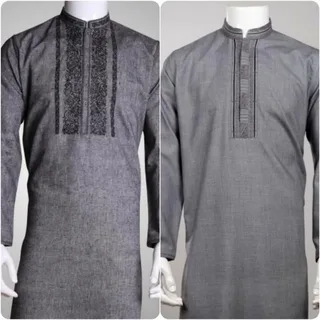The shalwar kameez is one of the most iconic traditional outfits in South Asia. Worn by both men and women, this elegant ensemble has remained a staple in countries like Pakistan, India, and Bangladesh for centuries. With its timeless appeal and versatile design, the shalwar kameez transcends generations, cultures, and occasions.
This blog delves into the history, cultural significance, modern adaptations, and styling options of the shalwar kameez, illustrating why it continues to be a wardrobe favorite.
The History of Shalwar Kameez
The origins of the shalwar kameez can be traced back to the Mughal Empire. Inspired by Persian and Central Asian influences, the outfit was initially popular among royalty and the elite. Its design provided comfort and ease of movement, making it suitable for the warm climate of South Asia. Over time, the shalwar kameez became more accessible and embraced by the general populace.
Today, the shalwar kameez represents a fusion of tradition and modernity, with variations in fabrics, patterns, and cuts that cater to diverse tastes.
What Makes Up a Shalwar Kameez?
The shalwar kameez is a two-piece outfit comprising:
- Shalwar: Loose-fitting trousers that taper at the ankles. Variations include straight pants, churidars, and tulip-style shalwars.
- Kameez: A long tunic or shirt, often extending to the knees or below. It can feature different necklines, sleeves, and hemlines depending on style preferences.
For women, the outfit is often accompanied by a dupatta, a long scarf that adds grace and sophistication. Men may pair their shalwar kameez with a waistcoat, jacket, or shawl for formal occasions.
Cultural Significance of Shalwar Kameez
The shalwar kameez is more than just a piece of clothing; it is a cultural identity and a symbol of tradition. It is widely worn across various South Asian regions, each bringing its unique interpretation to the outfit.
1. A National Dress
In Pakistan, the shalwar kameez holds the status of the national dress. It is worn with pride during cultural events, national holidays, and everyday life.
2. Celebratory Wear
The shalwar kameez is a preferred choice for festive occasions such as weddings, Eid, and Diwali. Embroidered and embellished versions in luxurious fabrics like silk, chiffon, or velvet are especially popular.
3. Symbol of Modesty
The outfit aligns with cultural values of modesty and elegance, particularly in traditional settings.
Variations of Shalwar Kameez
The shalwar kameez comes in numerous styles and designs, offering something for every occasion and personal taste.
1. Traditional Shalwar Kameez
This classic version features a straight-cut kameez paired with a simple shalwar, ideal for everyday wear or cultural gatherings.
2. Modern Shalwar Kameez
Contemporary designs experiment with asymmetrical cuts, high slits, and tailored trousers, appealing to a younger audience.
3. Regional Styles
- Punjabi Shalwar Kameez: Known for vibrant colors and phulkari embroidery.
- Sindhi Shalwar Kameez: Features intricate mirror work and Ajrak prints.
- Pathani Shalwar Kameez: Includes a loose-fitting kameez and shalwar, exuding rugged charm.
4. Occasion-Specific Variations
- Casual: Cotton or lawn fabric with minimal embellishments.
- Formal: Luxurious materials with embroidery, sequins, or stonework.
Why Choose Shalwar Kameez?
The shalwar kameez offers several advantages, making it a practical and stylish choice:
1. Comfort
The loose-fitting design ensures ease of movement, making it ideal for everyday wear and long hours.
2. Versatility
Suitable for all occasions, the shalwar kameez can be dressed up or down depending on the event.
3. Adaptability
Its design can be modified to suit changing fashion trends while retaining its traditional essence.
4. Cultural Connection
Wearing a shalwar kameez allows individuals to stay connected to their roots and express their heritage.
Styling Tips for Shalwar Kameez
The shalwar kameez offers endless styling possibilities for men and women:
For Women
- Pair with traditional jewelry such as bangles, jhumkas, or necklaces.
- Choose a dupatta with embellishments or prints for a festive look.
- Opt for footwear like khussa, sandals, or heels to match the occasion.
For Men
- Add a waistcoat or blazer for formal events.
- Pair with leather sandals or traditional Peshawari chappals.
- Experiment with colors and textures to enhance the outfit’s appeal.
The Global Appeal of Shalwar Kameez
The shalwar kameez has gained international recognition, with designers incorporating elements of the outfit into global fashion. Celebrities and influencers have also embraced the attire, showcasing its timeless charm.
Its adaptability ensures its place in wardrobes worldwide, catering to both traditional and contemporary tastes.
Caring for Your Shalwar Kameez
To keep your shalwar kameez in excellent condition, follow these care tips:
- Use mild detergents for delicate fabrics.
- Avoid direct sunlight when drying to preserve colors.
- Store in a cool, dry place to prevent damage.
Conclusion
The shalwar kameez is more than just an outfit; it is a celebration of culture, tradition, and style. Its enduring appeal lies in its ability to adapt to changing times while staying true to its roots.
Whether you prefer the simplicity of cotton for daily wear or the grandeur of embroidered silk for special occasions, the shalwar kameez remains a versatile and cherished choice. Embrace this timeless attire and experience the perfect blend of comfort, elegance, and cultural pride.
